Someone loves exclusively dogs, someone - exclusively cats, but there is not a single person who is indifferent to small kittens. These tiny creatures simply capture the heart with their charming foolishness and curiosity about everything that is happening in the vast world around them. Many secretly dream that their pet will always remain as small, both in appearance and in habits. This became possible several decades ago. It is enough just to get a dwarf cat.
Content
History of origin
There is a special science dealing with breeding new breeds of cats - felinology. Breeders of the USA and Europe in about the 80s of the twentieth century realized that the sweeter and smaller the creature comes out, the higher the price and more buyers it can be sold. Since then, breeding of dwarf cats has begun, occurring due to gene mutations or hybridization. A fairly large number of experiments have been carried out, but only a few dozen have been successful.
Advantages and disadvantages
Breeding forever small pets is a rather complicated matter that requires deep knowledge about the nature of cats, which is why, quite often, attempts to get a tiny kitten do not turn out to be successful. In this issue, both weaknesses and strengths can be distinguished. Let's take a closer look at each item.
Advantages:
- the appearance of small pets;
- most owners note a pleasant character, exceptional kindness, calmness and patience, as well as the complete absence of any manifestations of aggression and an unfriendly mood;
- some of the animals described help humans cope with their mental problems, which has been proven through a series of surveys and studies.
Disadvantages:
- little knowledge of the nature of our smaller dwarf brothers:
- unpredictability of hereditary pathologies;
- limited gene pool.
Features of the content
Like any other animal, eternal kittens have some peculiarities in keeping. Here are some tips to follow to keep your pet healthy and calm.
Nutrition
Correct and balanced nutrition is perhaps one of the most important criteria for maintaining the normal functioning of the body in any living creature. You should be especially careful about feeding a dwarf pet, especially if you have only had ordinary cats or cats before. Overeating should not be allowed, so you should feed your pet in small portions no more than 2-3 times a day.
Breeders who have extensive experience working with a particular breed will help with numerous questions: "What to feed the animal", "What kind of food is suitable", "Is it possible to feed the pet with what I eat myself". They can suggest some useful life hacks based on their personal observations and experiments.
It is worth purchasing feed only from trusted manufacturers.
Veterinary
The article has already mentioned more than once some developmental problems associated with the lack of knowledge of small purring sacs. Unfortunately, some breeders care more about making a rather big profit from the sale than about the health of the future or the newly born kitten.
Among the described animals, diseases of the musculoskeletal system are common, as well as various deformities in the spine and chest. That is why you should not neglect the visits to the veterinarian on any question that arises regarding a tiny pet.
Breeding
Breeding, or as felinologists also call this process, breeding work is very risky for the health of both kittens and cats. Due to the genetic characteristics of dwarf cats, this risk becomes even more acute. To do this work, you must have at least basic knowledge in the field of felinology and have successful practical measures in this matter. Clients trust breeders more who have a professional felinologist as their leader.
Another factor on which the success of the business depends no less is the right parental couple. We will not go deep into this topic, but we will indicate a couple of especially important selection factors:
- parents must have a good pedigree;
- parents should not come from interbreeding of family ties, in scientific terms, they should not be a product of inbreeding;
- it is quite difficult to find a good parental pair: it can take a considerable amount of time and effort, so you should entrust the breeding of dwarf animals to a trusted breeder.
Additional procedures
Now is the time to discuss the procedures required for quality care. The health and pleasant appearance of the pet depend on their implementation:
- Eye care. It is necessary to wipe the lacrimal paths, which can lead to suppuration and infection of the eyes.
- Ear care. Just like the eyes: they should be cleaned regularly.
- Dental care. Veterinarians recommend giving the dwarf creature small chewable bones or crackers to help fight tartar.
- Hair care. It is necessary to carry out regular water procedures, as well as comb the coat with brushes.
- Digestion. As mentioned earlier, the pet's nutrition should be balanced. It will not be superfluous to periodically review it.
- Temperature conditions. In cold seasons, it is worthwhile to insulate your pet with different suits, in hot seasons - to monitor the time spent in direct sunlight.
Many of the above measures may seem redundant and extremely protective. Many are not used to paying such attention to caring for a cat / cat, but the described pets have a weakened immune system, so these measures can even be called vital.
How to choose a dwarf cat
You need to take the purchase of this pet quite seriously, at least because of the difficulties and features listed above. You need to think over your decision several times to understand whether you are ready to devote enough time and money to a tiny creature. If, having painted yourself all the pros and cons, you are still firmly convinced that you want to get a dwarf friend, then you need to solve a number of questions: "What breed to choose", "how to choose and buy a kitten"
Breed selection
- The first thing to decide is the length of your future kitten's coat. Consider whether you want a short-haired, fluffy, or bald little face. When making this choice, also consider how often you can clean the house or apartment from wool.
- It will not be superfluous to decide on the exhibition class. Pets are divided into 3 such classes: show, breed, and pet. Show pets are the most suitable for participating in various competitions, as they most closely repeat the breed standards. Breed cats are intended for breeding work, and this category includes mainly female representatives.Male representatives belong to the pet class. In general, pet cats are purebred, but breeders do not use them for breeding and exhibitions.
- It is worth doing the theory: read the history of occurrence, description and reviews, view photos. You can read this information in the next section of the article.
- The breed you have chosen should be agreed in advance with the rest of the family, if any. It is important that the choice is pleasant and suitable not only for you.
Buying a kitten
When the difficult choice, described in the last section of the article, has already been made, difficulties arise with the acquisition of a small creature: where is it better and safer to buy, how to care for it at first
- You should buy a kitten from trusted breeders. This can be done both in offline and online stores. Technologies are well developed by 2020, so you can order a kitten from any corner of the world, and breeders and carriers will be responsible for delivering your new dwarf friend. However, many owners recommend taking it on their own, because it is extremely important for a small creature who is torn off from its mother to feel love, care and warmth from another creature, and it is better that you become such a creature.
- Ask the breeder all your questions about nutrition, health and care. Ask to introduce you to the parents of the baby and make sure of their health. Draw up a purchase agreement: if the breeder has nothing to hide, he will only be “for” the fulfillment of this formality.
The best breeds of dwarf cats
Now that all the features of the content, the strengths and weaknesses of such kittens are known, it is worth deciding on the breed. Below is the rating, divided into 3 large groups: budget, mid-range and premium.
TOP best budget dwarf cat breeds
Munchkin
A distinctive feature of the munchkin is short legs, which are 2 times smaller in size than the body.
The story of Munchkin began quite ordinary - in the 80s of the last century, a girl from one American state noticed a poor street cat and decided to pick her up. She also noticed that the cat had unusually short legs. The girl considered this feature a disease associated with the animal's street lifestyle.
However, after a while, the pet brought the same short-legged offspring. The females of this species repeated the story - the kittens again received short limbs. The girl who picked up a street cat went to see the veterinarian, during which it turned out that this feature was not a disease, but a mutation. So, everyone learned about the Manchikins, who appeared at the best exhibitions in the 90s.
Pet-class price: 15-20 thousand rubles.
The price of the bridge class: 40-60 thousand rubles.
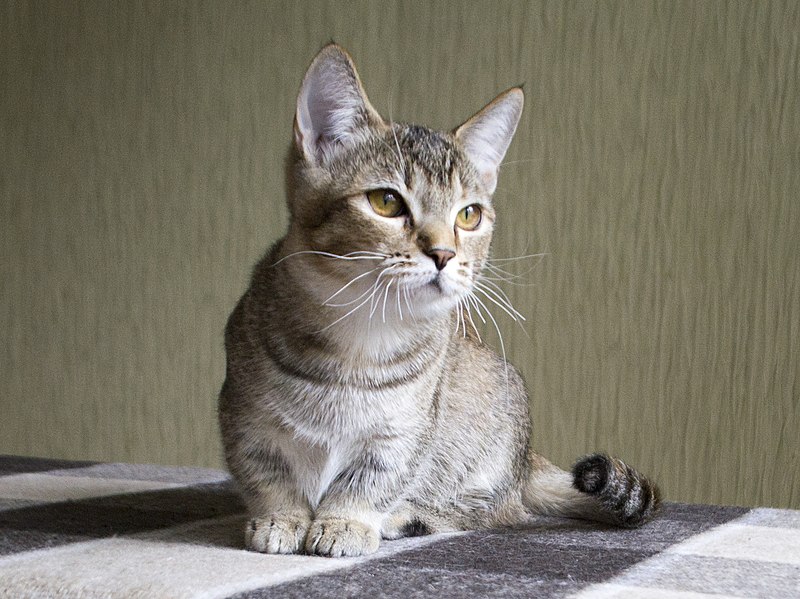
Specifications:
- Life expectancy: 13-16 years.
- Height: 65 cm.
- Weight: 2.2 - 4 kg.
- Country of origin: USA.
Advantages:
- obedient;
- friendly;
- do not jump on tables and cabinets;
- are not intrusive;
- don't meow often.
Disadvantages:
- like to hide things;
- wake up at night if their toys are not removed.
Napoleon
The breed, proudly and playfully bearing the name of the great commander, has long hair and short legs.
The founder of the Napoleons is considered to be Joe Smith, who fell in love with the beautiful munchkins so much that he decided to make them even more exotic by crossing them with a Persian cat with breathtaking appearance and an endlessly cute face. For a long time Joe could not achieve the desired result: many animals received a bunch of hereditary diseases, but by 1995 Joe's efforts were finally crowned with success.
Pet-class price: 40k rub.
Price of the bridge class: 100k rubles.
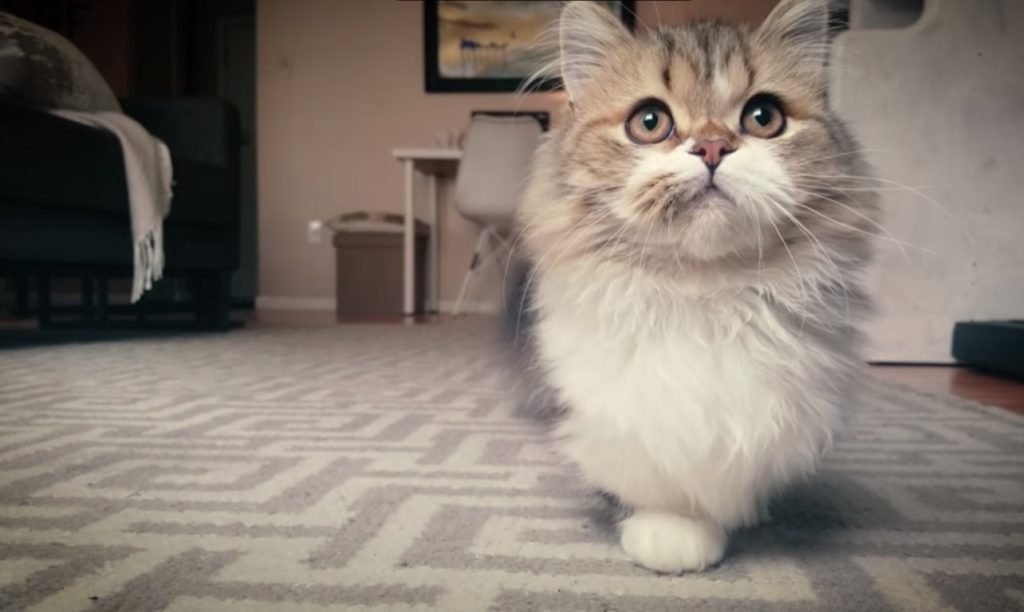
Specifications:
- Life span: 12-15 years.
- Height: up to 20 cm at the withers.
- Weight: 2-3.5 kg.
- Country of origin: USA.
Advantages:
- the best option for a family with a small child: the cat will only be happy with frequent games and "squeezing";
- friendly and peaceful;
- very funny.
Disadvantages:
- require a lot of attention, which the owners cannot always give due to the rhythm of life.
Minskin
A relatively new breed that appeared only at the beginning of the 21st century due to the crossing of the Munchkin and the Sphynx. The pet received a bald body with fur inserts and short legs. For their appearance, the minskins were nicknamed hobbits.
Minskins appeared thanks to the American breeder Paul McSorley, who crossed the Munchkin, the Sphynx, and also added the Burmese and Devon Rex to the resulting mixture. The first minskin named Rory was born in July 2000.
Pet-class price: 21K rubles.
Price of the bridge class: 50K rubles.
Specifications:
- Life span: 12-15 years.
- Height: up to 20 cm at the withers.
- Weight: 2-3 kg.
- Country of origin: USA.
Advantages:
- very gentle and affectionate;
- warm and pleasant to the touch;
- patient with small children.
Disadvantages:
- very mobile: they like to climb much higher and run all day.
TOP of the best dwarf cat breeds in the middle price category
Singapore
Singapore is listed in the Guinness Book of Records as "the smallest breed of cats in the world."
The history of Singapore began with the island of the same name - Singapore, where these animals lived in every sewer ditch. However, after the reconstruction of the sewer system, the population of animals decreased and who knows, maybe if it were not for the American geophysicist Meadow, who stayed on the island during a secret expedition and found interesting miniature creatures that were in vogue in the United States, they would have died out altogether. However, Meadow was able to smuggle several copies to the continent to his friend. It was she who started the breeding work with Singapore.
Pet price: 50k.
Breed class price: 120k.

Specifications:
- Life expectancy: 13-16 years.
- Weight: 2-3 kg.
- Height: at the withers: 20-25 cm, body length: 55 cm.
- Country of origin: Singapore.
Advantages:
- incredible beauty appearance;
- flexible character;
- hypoallergenic;
- unpretentious care.
Disadvantages:
- requires increased attention;
- difficult to find and purchase a pet.
Lemkin
An interesting feature of Lemkin, or as it is also called Lambkin, is short legs (like those of munchkins) and curly wool (like those of lambs). And the word Lambkin itself means "lamb".
The Lemkins originate in the 80s of the last century. They were obtained by the American breeder Terry Harris as a result of crossing a short-legged Munchkin with a curly Selkirk Rex. The first attempts did not end with success, and at the moment the breed is considered quite rare, because not always there is at least one kitten in a litter that fits the standards.
Pet-class price: 50k rub.
Price of the bridge class: 200k rubles.
Specifications:
- Life expectancy: 12-14 years.
- Height: up to 20 cm at the withers.
- Weight: 2-3.5 kg.
- Country of origin: USA.
Advantages:
- not naughty, obedient;
- are patient and child-friendly;
- moderately active;
- show interest in the world around them.
Disadvantages:
- they like to climb high surfaces, so you need to carefully monitor them on walks in order to avoid removing the pet from the tree;
- shed heavily due to their curliness.
Skokum
These are short-footed animals with longer hind legs than front ones. They have pointed ears and a fluffy, slightly curly coat.
Skoos were born in 1996 thanks to the American breeder Roy Galusha, who achieved boredom by crossing short-legged munchkins and curly laperms.
Pet-class price: 30k rub.
Price of the bridge class: 150k rubles.
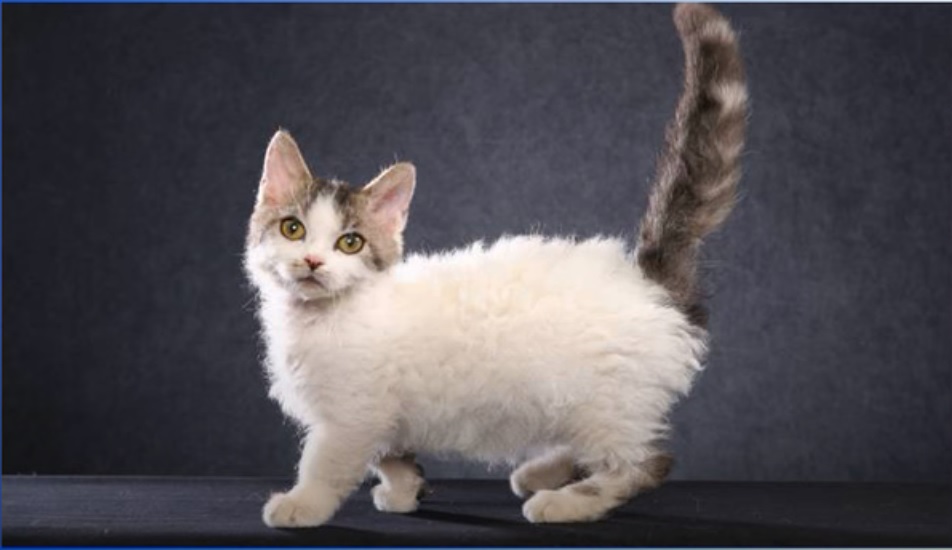
Specifications:
- Life Expectancy: 12-16 years.
- Height: up to 20 cm at the withers.
- Weight: 1.3-3 kg.
- Country of origin: USA.
Advantages:
- active and friendly;
- independent: you can leave alone, they will not get bored and do not get depressed.
Disadvantages:
- very quiet (you can hardly hear a loud meow or purr from them).
Kinkalow
Kinkalows are interesting for their short legs and long body combined with cute curved ears.
They are still in development, but got their start in the 90s thanks to the American breeder Terry Harris, who crossed the Munchkin and the American Curl.
Pet-class price: 45k rub.
Price of the bridge class: 150k rubles.

Specifications:
- Life expectancy: 12-14 years.
- Height: up to 20 cm at the withers.
- Weight: 1.3-3 kg.
- Country of origin: USA.
Advantages:
- perfectly interact with people;
- very affectionate and friendly;
- can do without owners while they are busy.
Disadvantages:
- love to explore all unfamiliar places in the house, so they may accidentally hit some objects.
TOP of the best premium dwarf cat breeds
Skif-tai-don
The difference between Scythian-tai-don lies in an absolutely proportional body - no short legs. Scythian-tai-don is a copy of a Siamese cat: as if someone took, brought up the "Fufelshmerts diminutive" and this magnificent breed turned out.
The history of the Scythian-Tai-Dons dates back to the 80s of the last century in Rostov-on-Don as a result of mutation. A female bobtail breeder picked up a cat with a broken tail on the street. After a while, she tied him with a Siamese cat, which from birth had a short tail. All kittens came out as ordinary bobtails. All except one, which seemed completely tiny compared to the others. This little kitten gave rise to the Scythian-Tai-Dons.
Pet-class price: 70k rub.
Price of the bridge class: RUB 300k
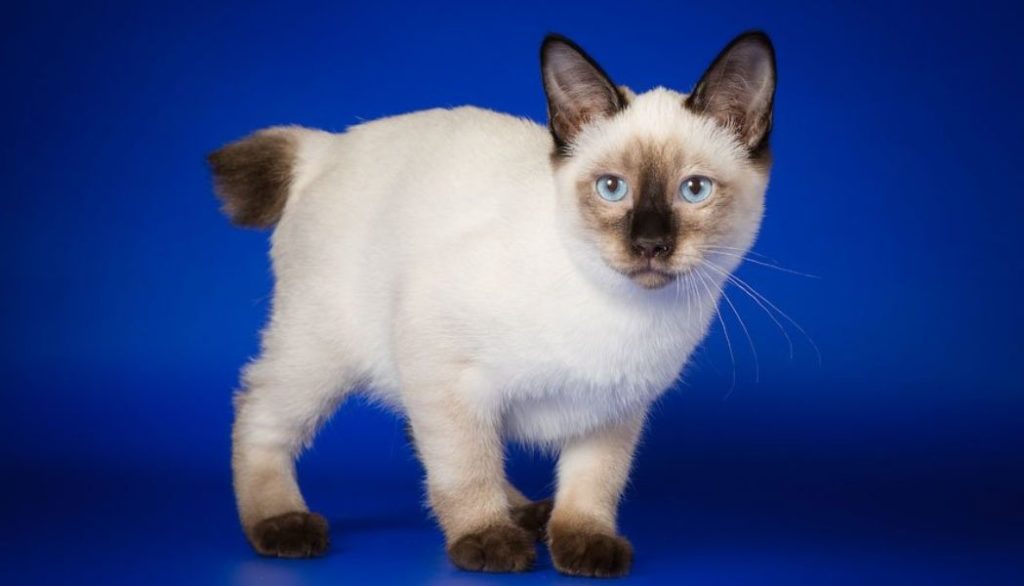
Specifications:
- Life expectancy: 18-20 years.
- Height: up to 19 cm at the withers.
- Weight: 1-2 kg.
- Country of origin: Russia.
Advantages:
- has great love for children;
- active and mischievous.
Disadvantages:
- even though small in size, they need room for pranks and games.
Bambino
Bambino is similar in its features to Minskinov.
It is assumed that the bambino kitten was born by accident. It was found by American breeders. The tiny creature interested them very much. They acquired a kitten and began breeding work with him and the Canadian Sphynxes. The result was not long in coming.
Pet-class price: 60k rub.
Breed class price: 400k rubles.
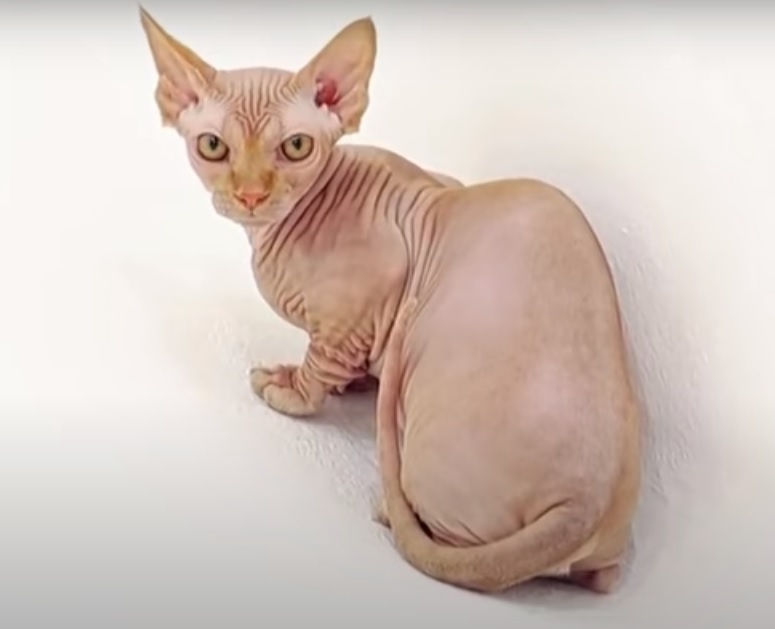
Specifications:
- Life span: 7-15 years.
- Height: up to 20 cm at the withers.
- Weight: 2-4 kg.
- Country of origin: USA.
Advantages:
- lack of signs of aggression;
- hypoallergenic;
- do not have the habit of jumping a lot, due to which the interior items remain intact.
Disadvantages:
- are very attached to people, so they cannot remain without them for a long time.
Dwelf
The peculiarity of the Dwarves is their short limbs with longer hind legs than the front ones, bare skin, and rounded curved ears.
This is one of the youngest breeds of dwarf cats: the first individual was bred in 2009 as a result of crossing the Munchkin, Sphynx and American Curl.
Pet-class price: 120k rub.
Price of the bridge class: 600k rubles.
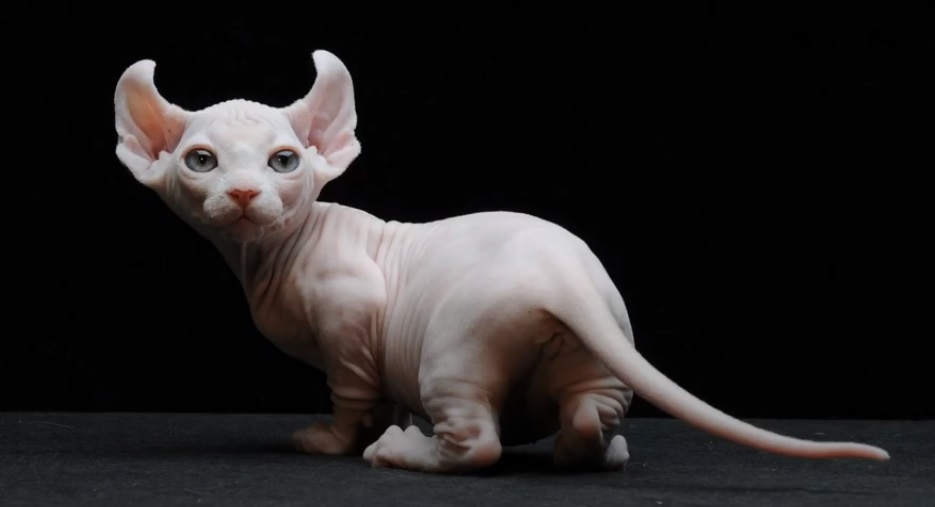
Specifications:
- Life expectancy: 18-20 years.
- Height: up to 18 cm at the withers.
- Weight: 2-3 kg.
- Country of origin: USA.
Advantages:
- do not show aggression towards children and other pets;
- moderately active;
- curious.
Disadvantages:
- they are very attached to the owners, therefore they are very bored if they are not at home.
Choosing the right dwarf cat breed is not easy. It is worth taking it extremely seriously. The tips above will help make it easier to find the right option at an affordable price. Enjoy your life together with your future pet!












